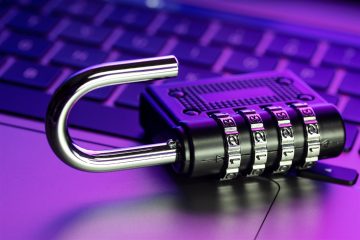Standardized invoices are those in XML format and stored electronically. A PDF file is generated when the document needs to be read, and the KSeF (Standardized Invoices and Accounting Standards) has introduced a new requirement to mark invoice visualizations with QR codes. This code allows for easy verification that the document was generated in KSeF and that all information contained therein is correct. Learn what a QR code on a structured invoice is and who is responsible for preparing accounting documents this way.
Is a QR code on a structured invoice always mandatory?
This obligation arises when the invoice is made available outside the KSeF system in the form of a visualization (PDF/paper) or in a form agreed upon with the buyer. Situations where a QR code on a structured invoice is required:
- the place of supply of services/commercial transactions is the territory of a Member State other than the territory of the country;
- the buyer is a taxpayer from another country who benefits from the exemption under the SME procedure;
- the buyer is an entity that does not have a registered office or a permanent place of business in the territory of the country.
In such cases, the invoice must have a QR code, especially if the document is to be shared outside the publicly available KSeF system. Changes related to QR codes on invoices result from the amendment to the VAT Act of July 1, 2024.
Therefore, a graphic code is not formally required for every structured invoice, but becomes mandatory when the document is transferred outside the KSeF (Polish Securities and Exchange System) as a PDF, paper, or other agreed-upon format. This requirement applies, among other things, to foreign transactions, buyers without a permanent establishment in Poland, and offline invoices.
Interestingly enough… Another important point is the postponement of the full implementation of the KSeF and QR code requirements until February 1, 2026. This gives businesses additional time to prepare for the changes. Until then, some invoices can still be created and shared without QR codes, but only to a limited and justified extent.
In what situations is a QR code necessary on an invoice?
A QR code is essential when sharing a document outside the KSeF system—for example, as a PDF or printout. This allows the recipient to quickly verify the invoice's authenticity and download its original visualization from the system.
Therefore, invoices with QR codes are especially useful:
- when you send an invoice to a foreign contractor;
- when a customer requests a paper invoice;
- if you share the document in the form of a visualization outside KSeF;
- offline, before the invoice enters the system.
It's worth noting that QR codes for invoices shared outside the KSeF system can be generated in two modes: online and offline. In both cases, the code must contain: link to the KSeF verification interface, date of document issue, seller's Tax Identification Number and invoice ID.
How to generate a QR code on a structured invoice?
Generating QR codes on standardized invoices in the KSeF system is possible in several ways. The first option is to connect directly to the National e-Invoice System. This allows you to generate a QR code in the form of a graphical signature based on the information contained on the invoice and the system number.
So how do you generate a QR code differently? Alternatively, you can use it to generate invoices and adapt your accounting system to current electronic billing standards. KSeF tokenThis is a simple solution that will allow you to easily generate and view issued commercial documents – including those with QR codes.
After downloading the token code from KSeF, you can save it in the company's software that handles electronic invoices. Here, correct integration of systems is important to ensure that the process of generating codes on standardized invoices runs correctly.
What are QR codes on standardized invoices?
The code in the form of a graphic symbol is representation of a unique character string in the form of a two-dimensional QR code compliant with the ISO/IEC 18004:2015 standard.
In practice… Invoices are tagged with a QR code each time the document is visualized in a commercial program. These tags have security certificates and are directly integrated with the invoice data and identification numbers in the KSeF system.
Visualizing standardized invoices with QR codes increases security for buyers. This allows them to easily verify all information contained on the invoice, such as:
- date and time of document issue;
- a unique number identifying the invoice in the electronic e-invoicing system;
- seller and buyer details;
- net value of commercial transactions and the VAT rates applied.
And if you want to conveniently use e-invoices in your company and adapt the way your business operates to current tax regulations and upcoming changes in invoicing, you can use an external system KSeF APIThis is a significant simplification, as you receive ready-made PHP, .NET, and Java libraries for quick implementation of innovative solutions and integration with the REST interface.
What are the consequences of not having a QR code on a structured invoice?
The absence of a QR code on an invoice visualized outside of KSeF (e.g., PDF, printout) may prevent the buyer from verifying the document in the system, and the invoice may be deemed invalid. Such situations may also result in other sanctions, such as: no possibility of deducting VAT.


